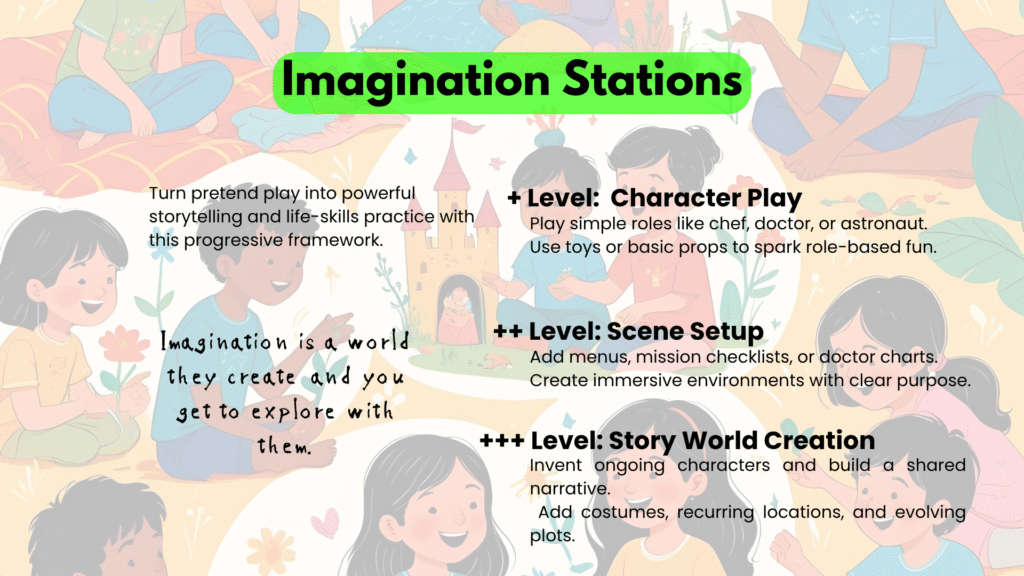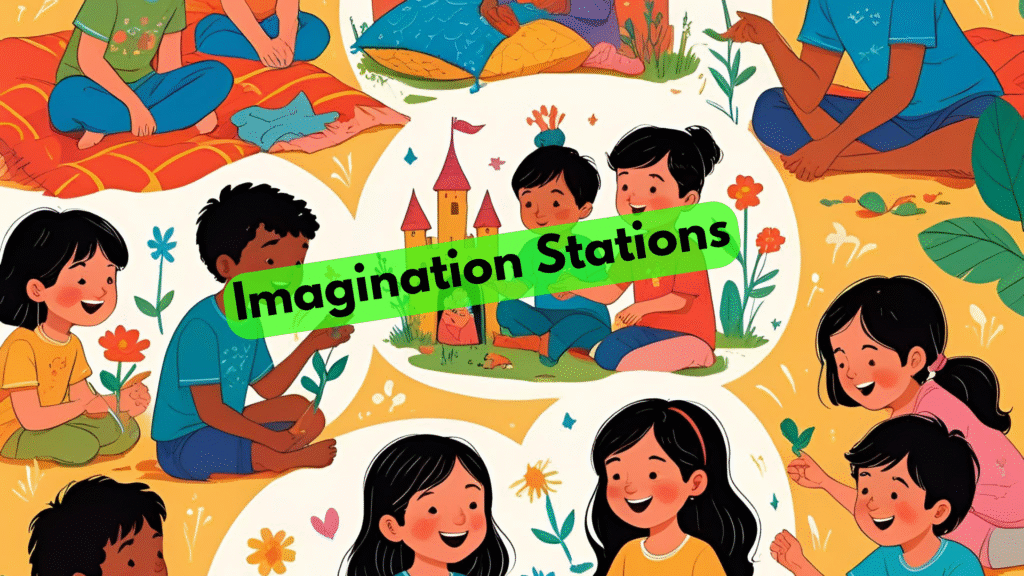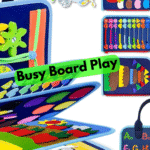Pretend play is more than just dress-up—it’s a vital part of childhood development that fuels creativity, language, empathy, and problem-solving. When children take on roles like doctor, chef, or astronaut, they’re not just mimicking the world—they’re exploring how it works and how they belong in it. Imagination Stations are play setups designed to spark that exploration and evolve with your child as their ideas become more complex.
By layering in structure and story, pretend play becomes more than a moment—it becomes a world. These three levels of play invite your child to grow from solo roleplay to full-blown storytelling universes with characters, missions, and meaning. All you need is a little space, a few props, and a willingness to step into their world.
+ Level: Character Play
Objective: Use toys or costumes to take on basic roles like chef, doctor, or astronaut.
This level is all about “trying on” different identities. Give your child toy tools (like a pan, stethoscope, or helmet) and prompt open-ended play:
- “What’s on the menu today, Chef?”
- “Can you check my heartbeat, Doctor?”
- “Where are we going in space?”
It builds confidence, vocabulary, and simple story structure.
++ Level: Scene Setup
Objective: Add environments and props to create immersive settings.
Set the stage:
- A kitchen corner with a paper menu and order slips
- A hospital table with labeled “tools”
- A spaceship with a launch countdown, fuel gauge, and mission checklist
This introduces sequence, planning, and purpose into pretend play while encouraging kids to connect their imagination with real-world structure.
+++ Level: Story World Creation
Objective: Build a shared narrative with recurring characters and costumes.
Now your child is not just a chef or astronaut—they’re The Great Space Chef or Captain Nova of the Starlight Mission. Together, create a fictional world that continues across multiple play sessions. Add new missions, characters, and even small sets or backdrops.
This level strengthens storytelling, continuity, emotional depth, and collaboration. It also gives kids ownership over their imagination—making pretend play a personal and empowering experience.

Final Thought:
Imagination Stations grow as your child grows. With each level, you’re not just building a game—you’re helping build a storyteller, a problem solver, and a confident communicator. The more you commit to their world, the more they’ll expand it.



